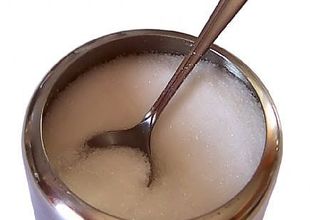Sugar is now 20 percent of the American diet, but it's not just our
health that suffers from its pervasiveness.
January 20, 2012

Americans think an awful lot
about sucrose -- table sugar -- but only in certain ways. We crave
it and dream up novel ways to combine it with other ingredients to
produce delectable foods; and we worry that we eat too much of it
and that it is making us unhealthy or fat. But how often do
Americans think about where sugar actually comes from or the people
who produce it? As a tropical crop, sugarcane cannot grow in most
U.S. states. Most of us do not smell the foul odors coming from
sugar refineries, look out over vast expanses of nothing but
sugarcane, or speak to those who perform the hard labor required to
grow and harvest sugarcane.
Of course, sugar can be made
from beets, a temperate crop, and more than half of sugar produced
in the United States is. But globally, most of the story of sugar,
past and present, centers around sugarcane, not beets, and as
biofuels become more common, it is sugarcane that is cultivated for
ethanol. What's more, some conscious eaters avoid beet sugar as most
of it is now made from genetically modified sugar beets.
While I do not fool myself that
sugar is "healthy," if I am going to satisfy my sweet tooth, I
prefer cane sugar, maple syrup, agave nectar, or honey over the
other choices: beet sugar, high fructose corn syrup, and artificial
sweeteners. Of the bunch, most Americans can find only honey and
perhaps maple syrup sustainably and locally produced, but cane sugar
is often the most versatile product for baking.
As a major consumer of cane
sugar, I was disturbed to learn the realities of cane sugar
production when I visited a sugarcane-producing area in Bolivia.
Sugarcane grew as far as the
eye could see on the degraded soils of the deforested industrial
agricultural area in Bolivia's lowlands. At one point, the van I was
riding in got stuck in a traffic jam of enormous trucks, each full
of sugarcane, delivering their loads to a refinery. The area around
the refinery smelled terrible, and the locals told us the smell came
from oxidizing ponds that hold the refinery's wastewater. When the
refineries are washed out, typically once a year, the wastewater is
dumped into local waterways, resulting in fish kills. This spurred
me to learn more about how sugar is made, both in the U.S. and
around the world, and how it impacts the land and the people who
produce it. Sadly, the story of sugar is also the story of the
African slave trade. Today, sugar production still uses exploitative
labor practices and can cause serious environmental problems.
Sugar's Rotten History
Nobody alive today remembers a
day when sugar was not a cheap, ubiquitous food in our diets, but
historically speaking, it's actually a relatively recent addition to
the European diet, one very tightly intertwined with the African
slave trade. As Sidney W. Mintz chronicles in his book Sweetness and
Power: The Place of Sugar in Modern History, when cane sugar first
appeared in England in the 12th century, only royalty could afford
it, and even then, only in small quantities. This is hardly
surprising, considering the journey sugar made to reach England.
Sugarcane, a fast-growing
tropical grass that reaches 12 to 15 feet high at maturity, was
domesticated around 8000 B.C.E. in New Guinea and was carried to
India, the Philippines, and perhaps Indonesia some 2,000 years
later. By 500 C.E., Indians were making sugar, a process that
involves pressing the two-inch-thick cane to extract a dark green
juice, rich with nutrients as well as sucrose, then boiling it down
to remove liquid and crystalize the sugar. Various processes can be
used to refine the sugar so that it is anywhere from a brown color
to the chemically pure, white crystal we know today. Of course,
until relatively recently, sugar refiners were never able to achieve
a mass-produced commodity product so pure that it was completely
white.
Continued:
http://www.alternet.org/story/153831/sugar_high:_the_dark_history_and_nasty_methods_used_to_feed_our_sweet_tooth?page=2